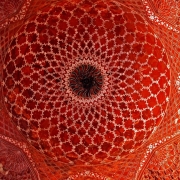Metaphysics of Muhammad The Nur Muhammad from Imam Ja‘far al-Sadiq (d. 148/765)to Nasir al-Din al-Tusi (d. 672/1274)
Abstract:
“This study analyzes the development of the theme of the “Light of Muḥammad”(al-nūr al-Muḥammadī) or the “Muḥammadan Reality” (al-ḥaqīqa al Muḥammadiyya)among several Shiʿi and Sufi thinkers through the seventh/thirteenth century. These thinkers include Imam Jaʿfar al-Ṣādiq (d. 148/765), Sahl al-Tustarī (d. 283/896), the Ikhwān al-Ṣafāʾ (early to mid 4th/10th century), the Ismaili dāʿīs Abū Yaʿqūb al-Sijistānī (d. after 361/971) and Ḥamīd al-Dīn al-Kirmānī (d. after 411/1020), Abū Ḥāmid al-Ghazālī (d. 505/1111) and ʿAyn al-Quḍāt (d. 526/1131), Ibn al-ʿArabī (d. 638/1240), ʿAbdal-Karīm al-Shahrastānī (d. 548/1153), and Naṣīr al-Dīn al-Ṭūsī (d. 672/1274). I argue that the “Light of Muḥammad” as a theological and metaphysical idea evolved historically through three distinct but cumulative phases of conceptualization: mytho-cosmological narrative, Neoplatonization, and ontological theophanization. Through these developments, the theological status of the Light of Muḥammad underwent a gradual but decisive shift from being reckoned as the first spiritual creation of God in the early period to being revered as the ontological self-manifestation of God in later periods“



